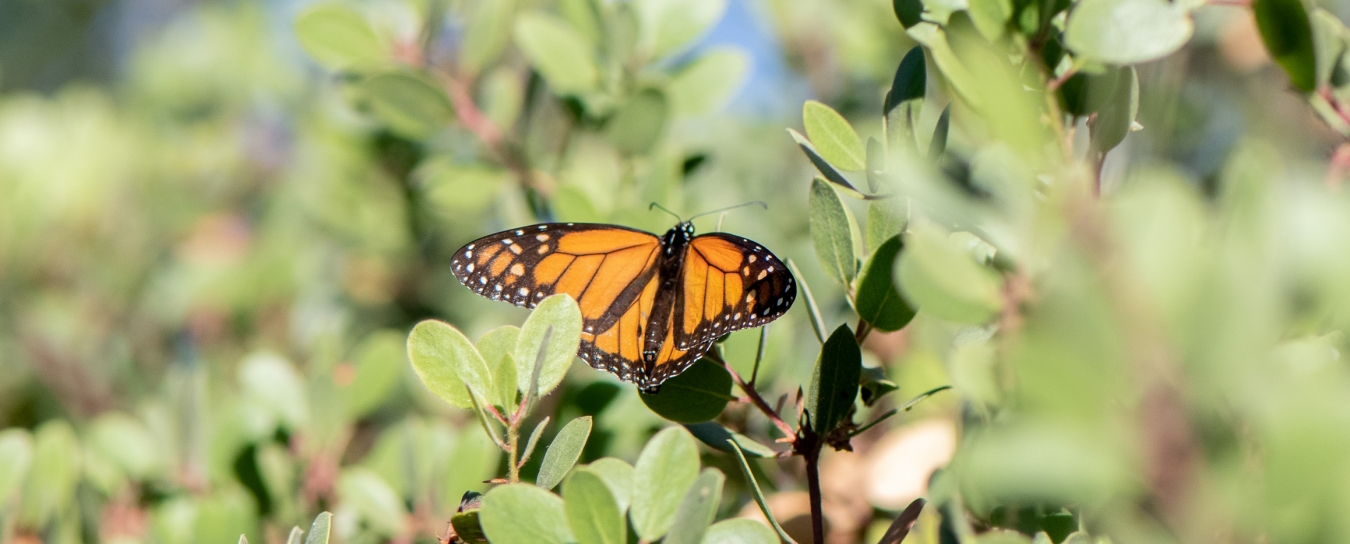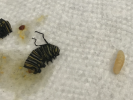
Invertebrates
See our handy guide to critters found in local homes and our Central Coast Butterfly FAQ. Browse the insects and other terrestrial arthropods we’ve identified. Check out local marine invertebrates, particularly bivalve mollusks and intertidal organisms.
- Anthropology
- Rocks & Fossils
- Invertebrates
- Vertebrates
- Botany
- Astronomy
- Fungi
- General
- Recently Asked
Preventing tachnid flies from killing our Monarch Butterflies
Hi, upon doing some research, we discovered tachnid flies are killing our backyard Monarch Butterflies. We took a few Monarch caterpillars inside, in huge glass jars to watch them create chrysalises and then turn into butterflies. However, a few died even in the chrysalis stage due to tachnid larvae. We saw a dead Monarch caterpillar outside on our planter that had attempted a chrysalis but died. So, my husband decided to dissect it and sure enough, there is a tachnid fly larvae inside! See the picture I’ve attached. How can we kill the tachnid larvae, but not the caterpillars on our Milkweed plants outside?

Curator Response
Dear Erin,
Based on the documentation you sent, these are indeed tachinid flies impacting your Monarch chrysalides! Thank you for sharing this with us. Although I don’t have an easy solution for your problem, I can offer some biological information about this interaction, and suggest a different way of thinking about it.
Tachinid flies are a family of about 10,000(!) described worldwide species of two-winged flies (order Diptera), many of which look like a variation on a large House Fly, and whose life histories are exclusively parasitoid. There are other significant and diverse groups of insect parasitoids, especially in the order Hymenoptera (wasps).
As you may know, a parasitoid is different from a parasite, which feeds off a host animal but under normal circumstances does not injure or kill it; a parasitoid, however, eats its host alive, typically from the inside, as both develop, and eventually the parasitoid kills the host. It is always the larval stage of the parasitoid that does the feeding. A parasitoid is something in between a parasite and a predator. There is a great survival advantage in this behavior, since the parasitoid has a nice, protected place to grow and develop, as well as a reliable source of food as it grows. When it happens, there are often several parasitoid larvae developing in a single host insect at a given time, though there appears to have been just one in the caterpillar you dissected. From the perspective of that caterpillar, I’m sure one was plenty.
Female tachinids oviposit (lay eggs) on Monarchs while the latter are caterpillars. This is an extremely common interaction in nature: a study looking at the rates of parasitization by the most common tachinid parasitoid of Monarchs, Lespesia archippivora, showed that about 13% of wild Monarch caterpillars contained these parasitoids!
Unfortunately, the fact that oviposition occurs at the early stage means that bringing Monarch caterpillars inside once they're finished feeding and preparing to pupate likely won't protect them from being parasitized. I don't know of an effective way to kill, remove, or discourage tachinids and other parasitoids from attacking your Monarchs, other than bringing the whole plant/caterpillar setup indoors for the entire life cycle, which would be quite a commitment.
However, if your goal is to observe nature in its fullness—including its strange and often gory ways—you can let the caterpillars and parasitoids play out the relationship they coevolved long before humans arrived to take sides. One of the beautiful things about having one amazing species (like Monarchs) around is that it allows for the survival of other amazing species—and in my opinion these tachinid flies are no exception! I defy anyone to not be impressed by the images and information on this page describing tachinid biology by a world expert on the group. This is a huge, diverse, fascinating group of insects, whose diversity and life histories we've only scratched the surface of. There is so much left to describe and observe!
Tachinids have also been helpful to humans on some occasions: some species of tachinid flies are generalists (they will attack a wide range of host species) while some are parasitoids of only one species of insect. This has implications for their use as biological control agents, some of which have been quite successful at controlling pest insect species.
Thanks again for sharing,
Schlinger Chair and Curator of Entomology Matthew L. Gimmel, Ph.D.


